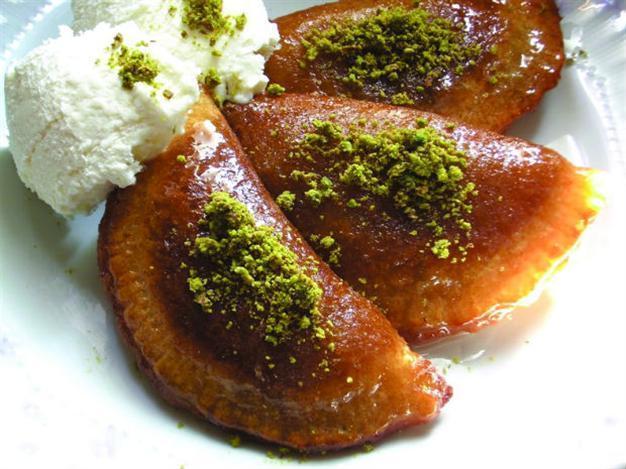Judith’s justice
Aylin Öney Tan - aylinoneytan@yahoo.com

Judith must be the heroine figure in Judaism; she surely has her legacy on Hanukkah, also known as the Festival of Lights.
This year the eight-day festival started at sundown yesterday, the second candle of the Hanukkah Menorah will be lit today. Hanukkah commemorates the rededication of the big temple in Jerusalem after the revolt of the Maccabees against the Hellenic Greek oppression. It was Judith’s dedication to save her fellows from the ruthless general Holofernes who occupied the big temple that made the reclaim of the Temple possible.
Judith’s understanding of justice was as ruthless as the slayed victim. The beautiful widow seduced the man with wine and cheese; the effect of the salty cheese made the victim quench his thirst with more wine; and inevitably all the wine made him doze off to his final sleep. When Holofernes was in deep sleep, Judith beheaded him and escaped from the enemy grounds with the head of her victim. Her act gave courage to the Israelites to move forward to defeat the terrified troops of Holofernes. The temple was finally saved, thoroughly cleansed and the menorah was lit by the last drops of unpolluted pure oil available, only enough to light the sacred lamp for one night. The new oil would be ready in seven days, but the oil lasted miraculously for the whole eight days. That is why the miracle of oil is the core to all Hanukkah recipes, observed by all Jewish communities worldwide. There has to be a food fried in abundant oil, either sweet or savory, or better both, served for the Hanukkah table. The selection of fried foods can vary according to the country; the usual latkes made with potatoes or jelly filled donuts all have an Ashkenazim connection that originates in European countries.
If we go back to the story of Judith, we can also trace back some authentic recipes that may have been prepared for Hanukkah. Judith’s revenge took place in Bethulia, and when we look at culinary culture of the region, one can easily suspect that some recipes obviously have a history related to the festival. Some recipes in Middle Eastern cuisine were always favored by the Jewish communities in Hanukkah; I’ve always wondered if the fried parsley-egg fritters “öcce” of Gaziantep cuisine have a connection with the festival. I bet there is one, especially if you think of the exact similarity between the öcce fritter pans and the famous buñuelos/bimuelos fritter pans of Jewish Sephardic heritage. There has to be also something on the table with cheese, so cheese-laden cheesecakes are also popular to salute the legacy of Judith’s seduction. Again a peek to the local cuisines leads us to cheese filled sweets like ataif, kadayıf, or künefe. So why not light our candles for Judith and prepare a wonderful sweet to celebrate the festival lights… and oil!
Bite of the Week
Recipe of the Week: A relatively less known recipe for Hanukkah is “ataif,” known as “taş kadayıf” in Turkey. It is practically pockets of folded pancakes filled with walnuts or fresh curd cheese, deep fried in oil and drenched in syrup. This special desert is a favorite in Mersin, Adana, İskenderun and Antakya (Antioch) area, all of which share similar tastes with Syrian cuisine. If one thinks of the roots of Hanukkah, this recipe is as authentic as you can get. First prepare a syrup by boiling 3 cups sugar and 2 cups water; when it thickens, slightly add a squeeze of lemon and a few tablespoons of orange flower water; bring to a boil again. Set aside to cool.
You can buy readily made “taş kadayıf” pancakes in Turkey, especially in the mentioned cities, but it is quite easy to make your own. Make a batter with 2 cups flour, 2 cups water (or half water, half milk), 1 teaspoon of dried yeast, 1 teaspoon of sugar and a ½ teaspoon salt. Mix thoroughly and leave in a warm place for about half an hour until the batter becomes frothy. Drop ladles of the batter on a flat griddle and cook one side only. The cooked side should be nicely browned and the topside should be thoroughly cooked dotted with air pockets. You’ll have about two dozen pancakes. Let cool the pancakes slightly and fill with roughly chopped walnuts (about 2 cups in total) and/or a tablespoon of fresh curd cheese; In Turkey “lor peyniri” would be ideal, it could also be ricotta, quark or any unsalted or vaguely salted fresh creamy cheese. Fold each pancake into a half moon shape and pinch firmly the edges. Fry in abundant frying oil and while still warm drench in cold syrup for a moment. Take the pancakes from the syrup with a slotted spoon and transfer to serving plates. Serve with clotted cream “kaymak” to emphasize the use of dairy for Hanukkah.
Fork & Gift of the Week: For a really luxurious quality gift check the website of Emir Ali Enç, who crafts the most amazing copper pots and pans. The whole collection can be seen at soy.com.tr or to find the flat crêpes pans also fit for pancakes, latkes, blinis or eggah/öcce/ajjéh go directly to the
link.
Cork of the Week: Kavaklıdere is the only winery producing certified kosher wine in Turkey. Check the
website of Denet Gıda, which gives a whole list of all kosher products in Turkey, including local and international kosher wines. The choice of drinks are not confined to wines only, there is also kosher rakı as an alternative.
 Judith must be the heroine figure in Judaism; she surely has her legacy on Hanukkah, also known as the Festival of Lights.
Judith must be the heroine figure in Judaism; she surely has her legacy on Hanukkah, also known as the Festival of Lights.